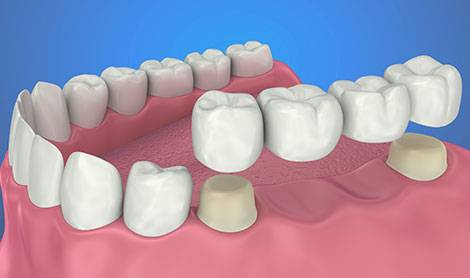
Dental Bridges to Restore Your Smile in Morgantown, WV
About Dental Bridges from Amy Everett DDS & Associates in Morgantown, WV
Dental bridges, literally, bridge the gap created by one or more missing teeth. A bridge is made up of two crowns for the teeth on either side of the gap—these two anchoring teeth are called abutment teeth—and false tooth or teeth in between. These false teeth are called pontics and can be made from gold, alloys, porcelain, or a combination of these materials. Natural teeth or implants support dental bridges. Call Amy Everett DDS & Associates at (304) 599-1234 for a consultation to obtain dental bridges.

What Are the Benefits of Dental Bridges?
There are several benefits to using dental bridges. Bridges can:
- Restore your smile
- Restore the ability to properly chew and speak
- Maintain the shape of your face
- Distribute the forces in your bite properly by replacing missing teeth
- Prevent remaining teeth from drifting out of position.
What Types of Dental Bridges are Available?
There are three main types of dental bridges:
Traditional bridges involve creating a crown for the tooth or implant on either side of the missing tooth, with a pontic in between. Traditional bridges are the most common type of bridge and are made of either porcelain fused to metal or ceramics.
What is the Process for Getting a Dental Bridge?
During the first visit for getting a dental bridge, the abutment teeth are prepared. Preparation involves re-contouring these teeth by removing a portion of enamel to allow room for a crown to be placed over them. The next step is to make teeth impressions, which serve as a model from which the bridge, pontic, and crowns will be made by a dental lab. Your dentist will make a temporary bridge to wear to protect the exposed teeth and gums while the bridge is being made.
During the second visit, the dentist removes your temporary bridge and checks and adjusts the new permanent bridge, as necessary, to achieve proper fit. This may require multiple visits to check the fit of the metal framework and bite, depending on each case. If the dental bridge is a fixed (permanent) bridge, your dentist may temporarily cement it in place for a couple of weeks to make sure it fits properly. After a couple weeks, the bridge is permanently cemented into place.
